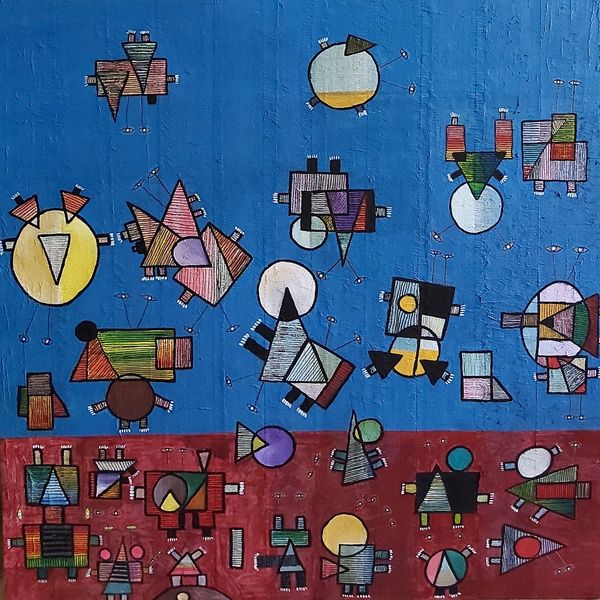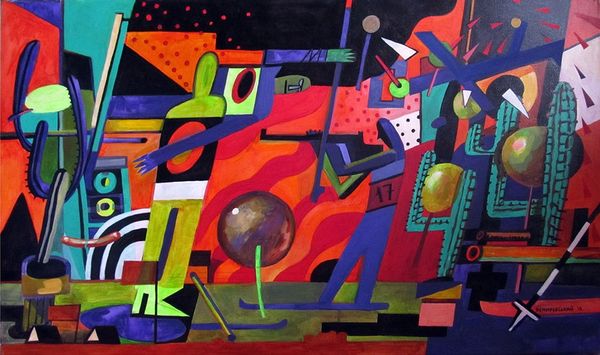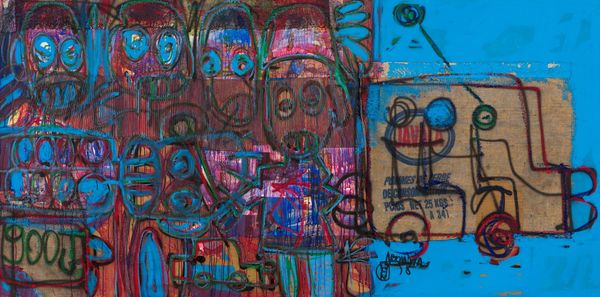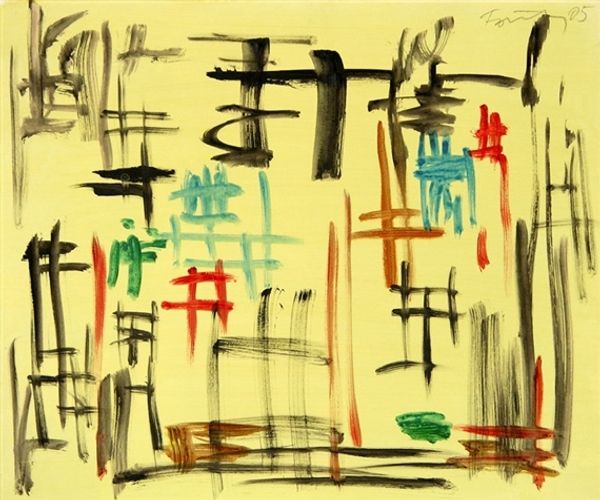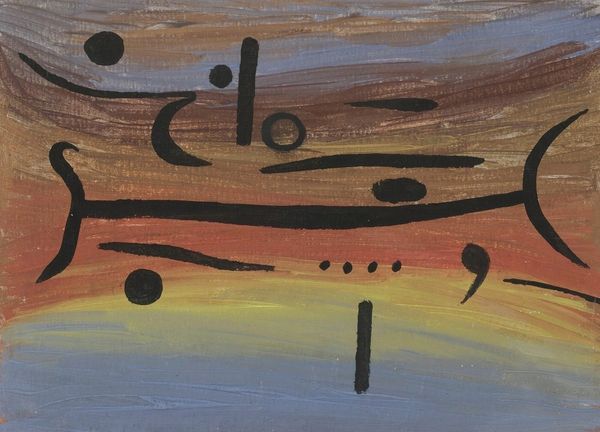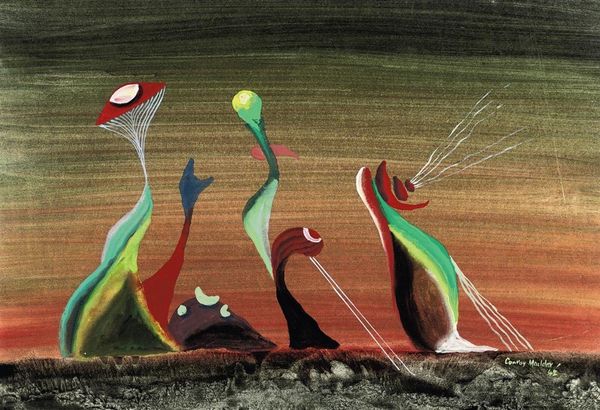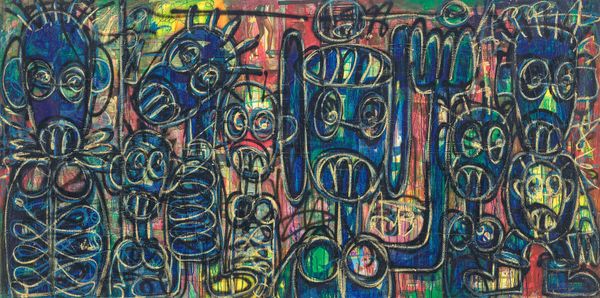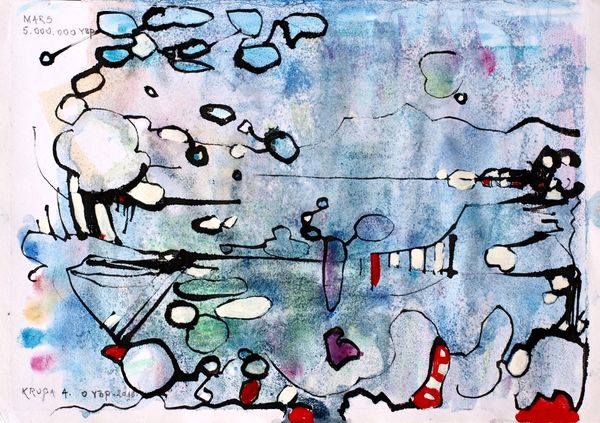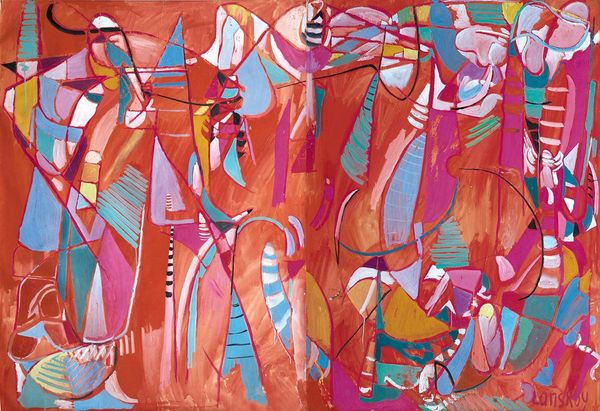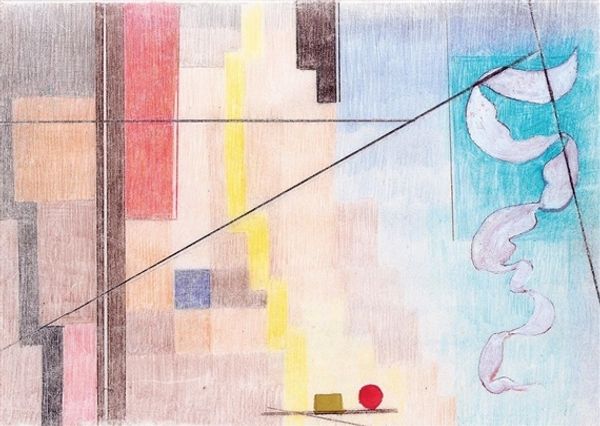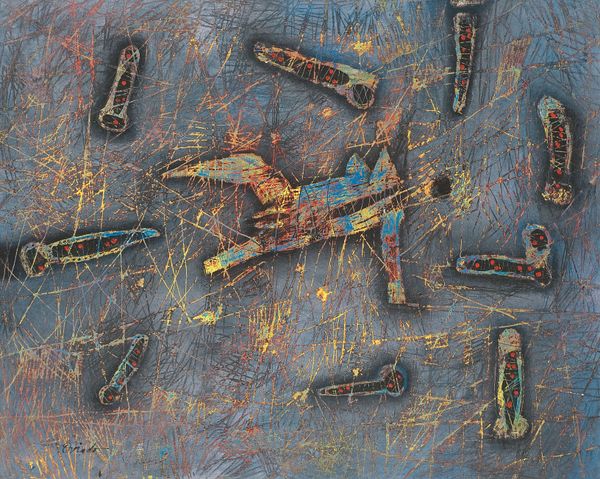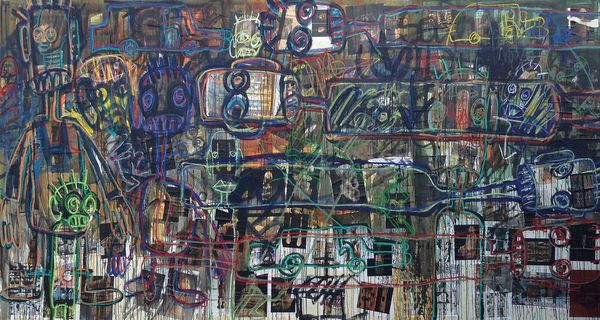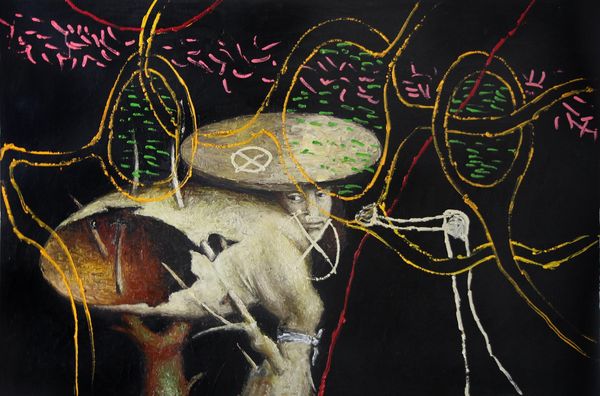
painting, acrylic-paint
#
painting
#
acrylic-paint
#
geometric
#
abstraction
#
surrealism
Copyright: Conroy Maddox,Fair Use
Curator: This is "Checkmate," painted in 1942 by the British surrealist Conroy Maddox, using acrylic paint. Quite striking, isn't it? Editor: My first impression is one of disquiet. The geometric forms, arranged like abstracted figures on a muddy field, feel oddly mechanical and detached, standing rigidly to attention like an absurd monument. What are the implications here? Curator: It's crucial to view this through the lens of Maddox's engagement with surrealism, emerging against the backdrop of World War II. The mechanization of warfare was radically changing our relationships with each other, so perhaps, we see this expressed in the chosen colors and geometrical structures? Editor: Precisely, and this period witnessed surrealism’s powerful critique of established socio-political structures, offering alternative visions. To this day, museums and institutions promote a certain power dynamic in the public consumption of the artwork. Does it matter to Maddox whether these critical messages are clear within established systems? Curator: Consider also Maddox's background; he was deeply involved in the anti-art movement and often utilized collage and readymade materials. We should question what this meant for his working process, what kinds of assembly lines are behind this production? How do those materials impact his artistic creation? Editor: True. And look at these abstracted forms. They feel like bureaucratic entities on display, regimented soldiers devoid of real individual intention. Assembled components in an engine of an ever-powerful ruling. Curator: These kinds of bold, vivid acrylic colours contribute greatly to this feeling. They lack subtlety and are boldly proclaiming what this regime is about: simple production. We should examine who has benefited from acrylic productions and in what circumstances Maddox came across these mediums, so we can uncover the role of commodity during times of conflict. Editor: These ideas open up interpretations of Maddox's own positioning within this painting, in that turbulent political moment. By presenting such forms, and such structures, is Maddox making his own kind of counter-argument against socio-political events of that era? Curator: I concur, he creates, critiques and protests against dominant norms using readily-available resources and tools of this very dominating culture. His painting gives rise to new forms that emerge in the post-war landscape. Editor: It all culminates in such compelling perspectives on the socio-historical understanding, doesn't it? Curator: Yes, considering both process and historical context makes this a work ripe for critical interpretation and it certainly allows for some stimulating discussion about a post-war era.
Comments
No comments
Be the first to comment and join the conversation on the ultimate creative platform.
